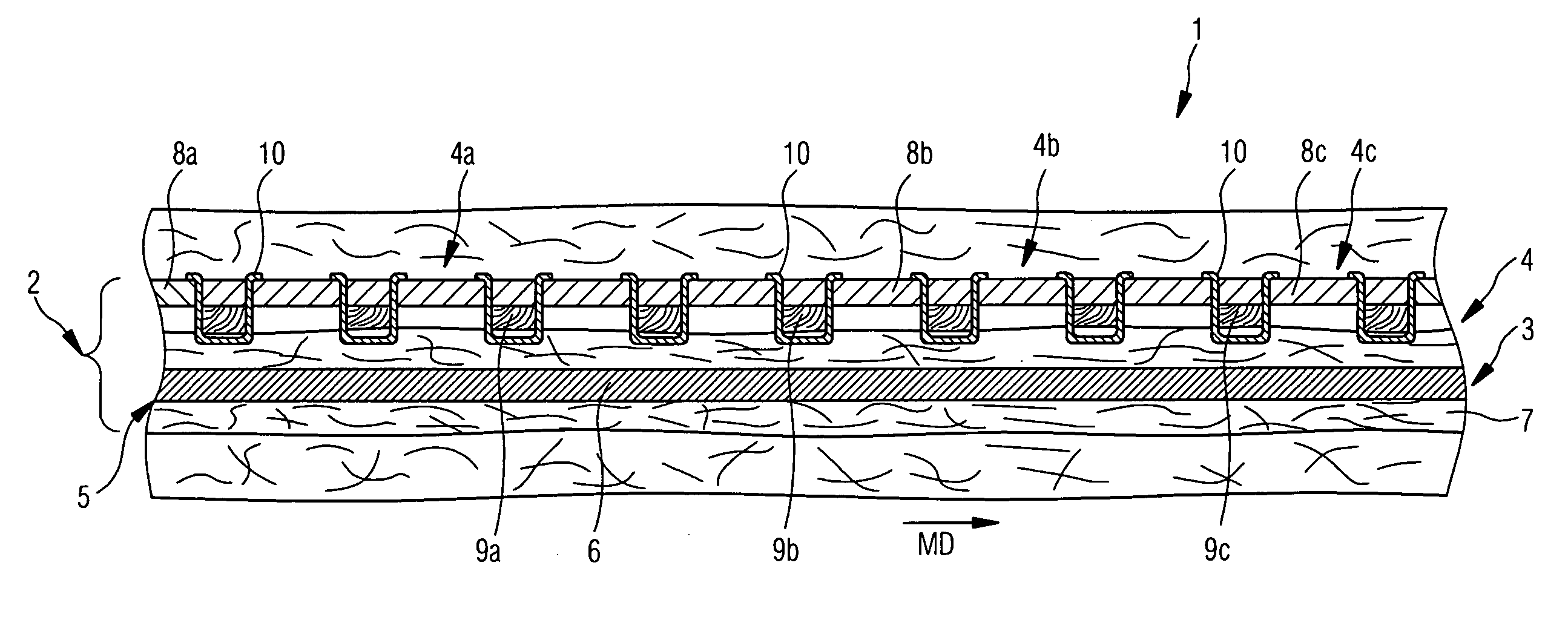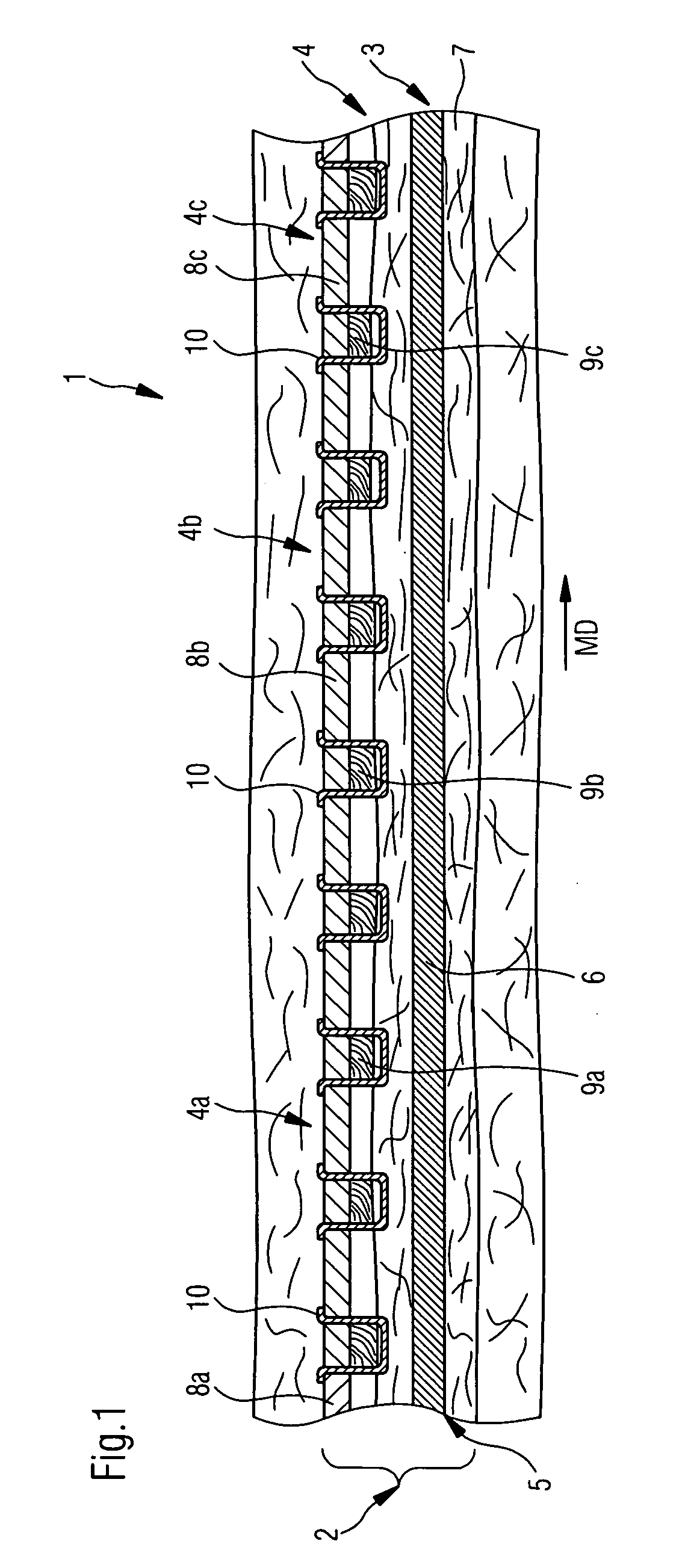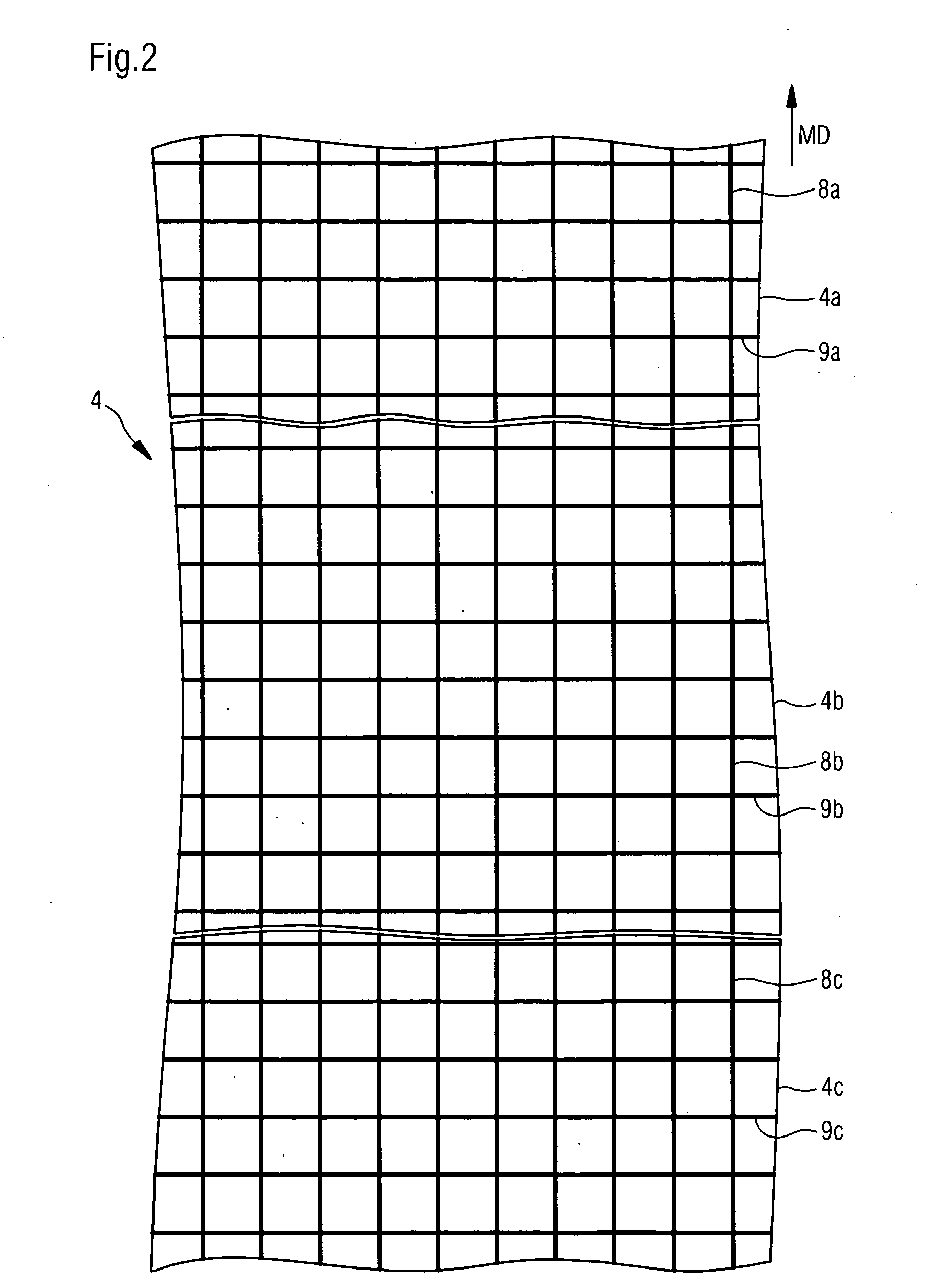Press felt and method for its production
a technology of press felt and production method, which is applied in the field of press felt, can solve the problems of further reducing the internal hollow space volume, reducing the water absorption capacity, and reducing the internal volume of the press felt, so as to facilitate the production. the effect of handling
- Summary
- Abstract
- Description
- Claims
- Application Information
AI Technical Summary
Benefits of technology
Problems solved by technology
Method used
Image
Examples
Embodiment Construction
[0091]Referring now to the drawings, and more particularly to FIG. 1, there is shown a longitudinal sectional view of an inventive felt belt 1. It is to be noted that the longitudinal direction of the felt belt 1 is consistent with the machine direction MD.
[0092]The felt belt 1 includes a basic structure 2 which is formed by a longitudinal reinforcement module 3 extending on the width of the felt belt, and including a cross reinforcement module 4, extending on the width of the felt belt.
[0093]The longitudinal reinforcement module 3 includes one laid structure of longitudinal threads on the width of the felt belt 1, which is formed from a group of parallel longitudinal threads 6 (only one such thread is recognizable in FIG. 1) which extend essentially in longitudinal MD direction of the belt 1, and including one carrier layer 6 which is bonded with the laid longitudinal thread structure 5 which extends on the width of the felt belt 1. Said carrier layer 6 is predominantly in the embo...
PUM
| Property | Measurement | Unit |
|---|---|---|
| angle | aaaaa | aaaaa |
| angle | aaaaa | aaaaa |
| angle | aaaaa | aaaaa |
Abstract
Description
Claims
Application Information
 Login to View More
Login to View More - R&D
- Intellectual Property
- Life Sciences
- Materials
- Tech Scout
- Unparalleled Data Quality
- Higher Quality Content
- 60% Fewer Hallucinations
Browse by: Latest US Patents, China's latest patents, Technical Efficacy Thesaurus, Application Domain, Technology Topic, Popular Technical Reports.
© 2025 PatSnap. All rights reserved.Legal|Privacy policy|Modern Slavery Act Transparency Statement|Sitemap|About US| Contact US: help@patsnap.com



